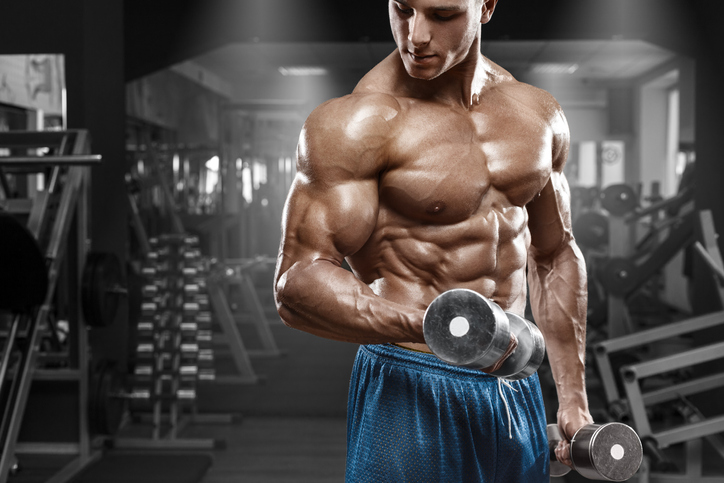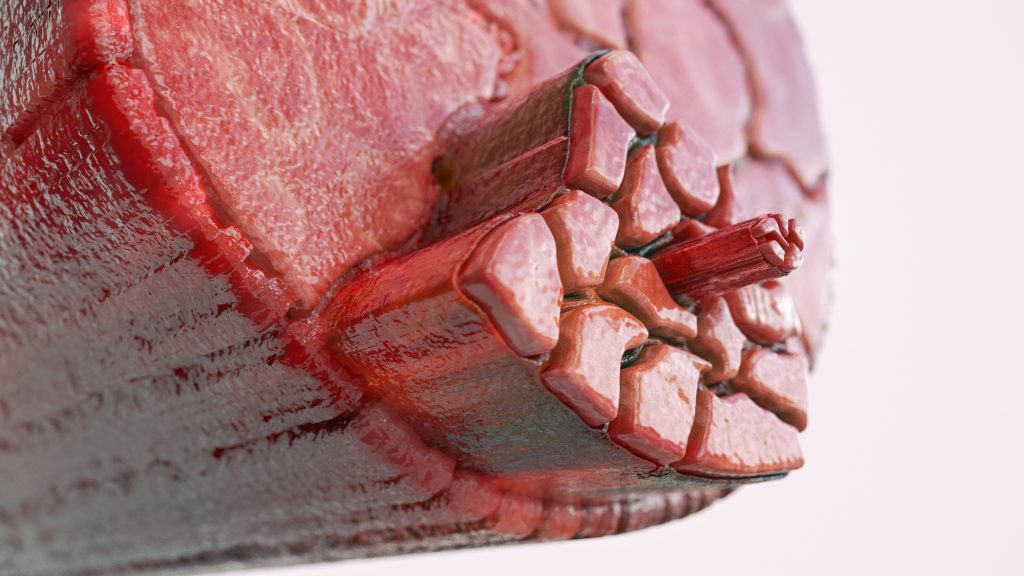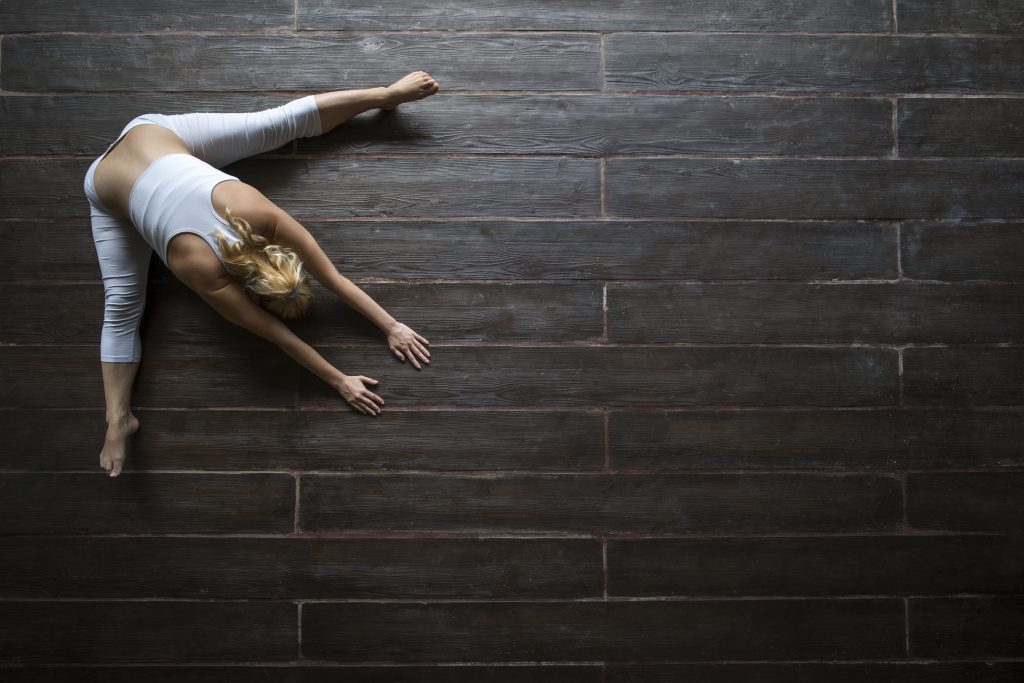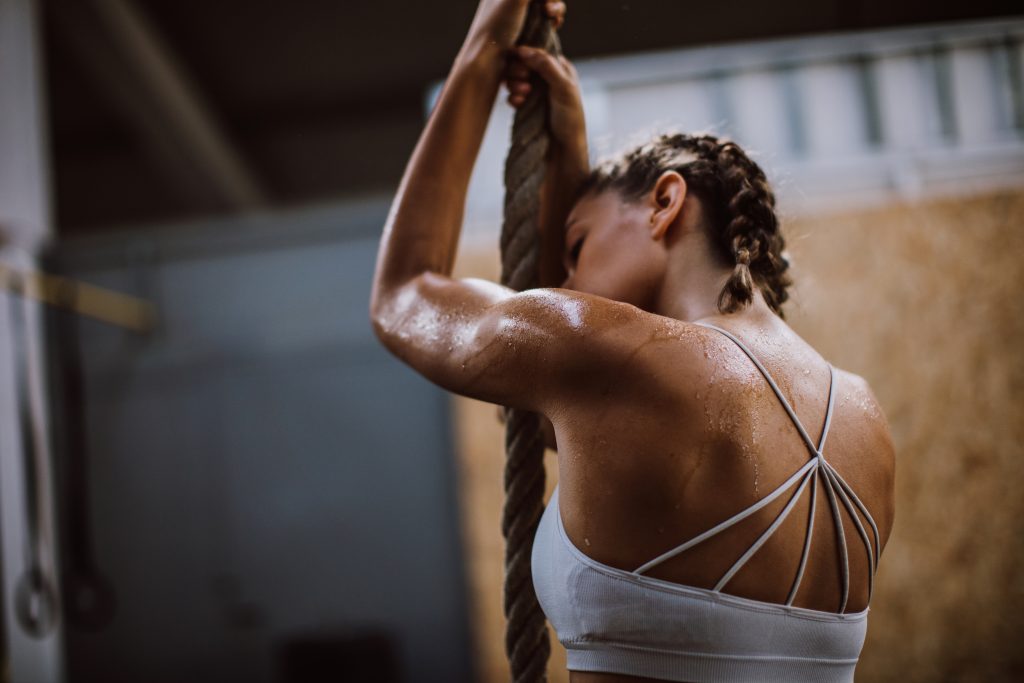If you’ve ever exercised, I expect you’d be familiar with what happens to our bodies on the outside; At least I know with me, I usually end up pouring with sweat mid-set, and end up looking a bit like a tomato. However, have you ever stopped to think about what happens to muscles during and after exercise, and how exercise affects our muscles?
Firstly, both resistance training and cardio help to increase our heart size, allowing blood to pump more effectively around the body and to the muscles.
Exercise also helps strengthen our skeleton making us more robust! Moreover, increasing the muscle volume around the trunk area aids respiration by helping improve the amount of oxygen we breathe in and expel.
A solid defined core section can also help support digestion, therefore, making our metabolic system more efficient.

Muscle Structure
Skeletal muscles are made up of many muscle tissues including connective tissue, nerve tissue and vascular tissue. Skeletal muscles come in all shapes and sizes and include various muscle fibres.
Each muscle fibre is cylindrical and can often contain thousands of muscle fibres encased in a tissue called the epimysium.
The primary function of a skeletal muscle is ‘contraction’ and when a muscle contracts we produce an action, preceded by an impulse from a nerve cell.
The Sliding Filament Theory of Muscles
Sliding filament theory explains how the actin and myosin (protein filaments) create a muscle contraction.
The sliding filament theory is fantastic for explaining what happens to muscles during and after exercise and how muscle contractions work, and it is usually illustrated by various diagrams which for me are very helpful! And I do love a good diagram!
The basis of this theory is that both the myosin and actin filaments, which are parts of the myofibrils, slide past one another while the filaments remain at the same length thus creating a muscle contraction.
Muscle fibres comprised of both thick and thin filaments known as myofibril are inside a tissue we call the epimysium. These myofibrils extend the entire length of the muscle fibre and are responsible for the contraction of the muscles.

We need to understand how muscles move so that we can understand which types of movement will aid our training. This will, in turn, reinforce our knowledge of what happens to muscles during and after exercise.
What Happens to Muscles During and After Exercise: Muscle Movement
There are many different ways in which we can train our muscles to achieve our desired goals, and I’ve listed them below with a brief description of each one;
- Concentric
A concentric contraction is where the muscle shortens under load or tension; for example, when completing a bicep curl, the bicep is working concentrically on the upward phase as the muscle shortens.
- Eccentric
An eccentric contraction is when the muscle lengthens under load or tension, it is the opposite of a concentric movement.
- Isometric
With an isometric contraction, the contraction still occurs, but with very little or no movement. You often hear it referred to as an isometric hold because the muscle works by holding it in one position. An isometric exercise is commonly used in the acute stages of rehab which helps aid muscle rehabilitation.
- Agonist
The agonist also known as the prime mover is the muscle that provides the most force to complete the movement. For example, during the bicep curl, the agonist is the bicep.
- Antagonist
The antagonist is the muscle that works against the agonist. As the agonist contracts, the antagonist relaxes.
- Synergists
These muscles stabilise the joint while the movement is occurring to provide support and flow within the movement.
Using Muscular Development to Get Sixpack Abs!
Exercise has many beneficial effects on our bodies both physically and mentally. On more of a biological level, exercise has proved to reduce adipose tissue (FAT) commonly stored around the abdominal region. Fantastic news if you want to get rid of those muffin tops right!

A Common Myth of Muscles Debunked!
“Many people tend to think that the reason our bodies look the way they do is down to genetics, and although genetics does play a part regarding the development of our muscles, the common myth that we inherit body composition from our parent’s is just simply not true. We can achieve almost any body shape if we channel our training specifically to our goal.”
How can I achieve muscle growth through exercise?
Peoples goals vary in the gym, and understanding what happens to muscles during and after exercise helps the Shredify workout engine prescribe only the perfect exercises.
Shredify uses thousands of lines of code to generate programmes based on an individual’s body shape goal. Shredify learns the user’s fitness levels, and training plans then evolve with the user.
One specific goal for many is to gain muscle (hypertrophy), for which Shredify provides the Goliath programme.
This goal can be for many reasons, perhaps to look bigger and bulkier, or even to help increase their basal metabolic rate (better known as your metabolism).
To achieve hypertrophy, we should do the following;
- Gain more muscle cells
- Increase muscle fibre diameter
- Lengthen muscle fibres
As previously discussed, for the muscle size to increase we need to increase the size of the myofibrils as muscle growth happens by hypertrophy of the existing myofibrils.
So essentially what I’m saying is that by adding more myofibrils to the muscle, you can increase the size of the muscle.
There is another way to achieving all of this though, a secret weapon known as hyperplasia!
What Is Hyperplasia and How Can I Achieve It?
The term hyperplasia is referred to when building muscle; however, it doesn’t translate to increasing the size of the muscle fibres that you already have but splitting your current ones into more muscle fibres.
This method of splitting muscle fibres means then that the more muscle fibres you have, the greater potential you have to expand those muscle fibres.
One method of inducing hyperplasia is to introduce ‘stretch-overload training,’ i.e. stretching with weights.
Stretch overload training is different from the static stretching routine you should perform at the end of a workout. It is actually stretching as you lift weights, encouraging the fascia and connective tissues to expand.
To do this, you should complete your reps in a semi-stretched position. So, once at the end of your range, and at the point of failure, complete partial reps, without a pause; this will get the muscles firing like never before!
Doing this type of training can add sarcomeres to the muscle fibres which allows more expansion in the surrounding tissues.
Many bodybuilders use this type of training and Schwarzenegger himself is very well known for it.
I use this training A LOT, especially when training arms!

Guidelines for German Volume Training and Conditioning Muscle
German Volume Training (GVT) works by putting a high workload on your muscles, forcing the muscles to respond with an increase in muscle size.
This method means that instead of performing 3-5 sets of 8-12 reps, a gold standard for increasing muscle (hypertrophy), that you instead perform 10 sets of 10 reps.
In-between the sets you should have a 1 minute rest period, then continue with the next set.
The weight involved should be something that you’re comfortably able to lift. As soon as the weight starts to affect your form, or when you’re failing to complete a rep, stop!
It is so important to appreciate what happens to muscles during and after exercise because this will aid mindset. It will also instil the importance of having rest days in between intense training days too.
You should start to see results from week six.
Does German Volume Training Really Work?
A little case study on me…
Understanding what happens to muscles during and after exercise helped me to rest after suffering from an ACL rupture.
Knowing that rest is sometimes what is needed, can promote a much faster recovery, trust me! So, once rested and rehab was on the cards, I felt ready to get back in the gym and smash it.
I found using GVT has helped me regain stability in my knee, as well as improve my aerobic endurance previously lost due to being unable to train. GVT allowed me to train and push myself without risking any further injury.
It is super important that we allow ourselves to have some rest days in-between our training, as this allows our muscles time to recover, rebuild, and be prepped for more training.
If you do not allow yourself to have rest days, you’re at risk of causing injury.
What Happens to Muscles During and After Exercise: Doms Explained
DOMS (delayed onset of muscular soreness) is perfectly normal, it normally kicks in between 24-48 hours after an intense session and is a temporary feeling that results in an inflammation of your muscles. It is critical in rebuilding and encouraging growth and repair in our muscles.
When we introduce new exercises into our training programmes, think about what happens to muscles during and after exercise, as we can reduce the effect of DOMS, by stretching.
For a long time, I really suffered quite severely from DOMS, mainly because my training was very irregular.
I’ll give an example; I would hit a back session, then rest it for a few weeks before coming back to do the same workout again, and wonder why I was still getting so sore. The reason was that I hadn’t conditioned my back enough for my body to adapt to the type of training I was performing.
“To help reduce the effect of DOMS, I now also include foam rolling at the end of my session which I find helps to loosen things up and get rid of any knots that I have.”
Stretching after Training to Relieve Muscle Soreness
Completing a cooldown and allowing your body to return to its resting state is as important as the session itself. Cooling down at the end of a workout allows your heart rate to return to its normal beats per minute (bpm).
It is then when you should stretch out your muscles.
Stretching will be more effective towards the end of a session when muscles are at their warmest. This is so that muscle fibres can be lengthened and realigned to alleviate DOMS.
If one of your training goals is to increase your flexibility, then make sure to incorporate a designated time at the end of your session to spend on stretching.

The Benefits of Stretching:
Ok, so another great reason to why we should understand what happens to muscles during and after exercise is how your body can benefit from stretching!
– Increased blood flow to working muscles resulting in greater performance
– Better posture
– Aiding in management and the prevention of muscle pain
– Release tension headaches
Tension headaches are something that I suffer from a lot and have done from a young age. I find stretching out my upper traps and keeping my neck mobile combats these.
I don’t tend to get them anymore unless I’ve been a bit naughty and not drunk enough water that is!.
“Being a gymnast, I know to spend at least 30 minutes after my workout, stretching out, and I find that this helps me recover from DOMS over the next couple of days.”
After a big leg session, a good stretch prevents me from doing that awkward ‘falling down the stairs walk’.
There are many different ways of stretching, check out Stevo’s blog ‘Stretch to Get Strong!’. It’s an excellent read and a valuable guide to help you understand when to implement different stretches, to benefit training.
So, there you have it! the understanding what happens to muscles during and after exercise, and the importance of stretching to improving conditioning! So please STRETCH after your session, as my poor hands can’t handle any more highly tensioned muscle tissue! 😉
Love and Health HP
